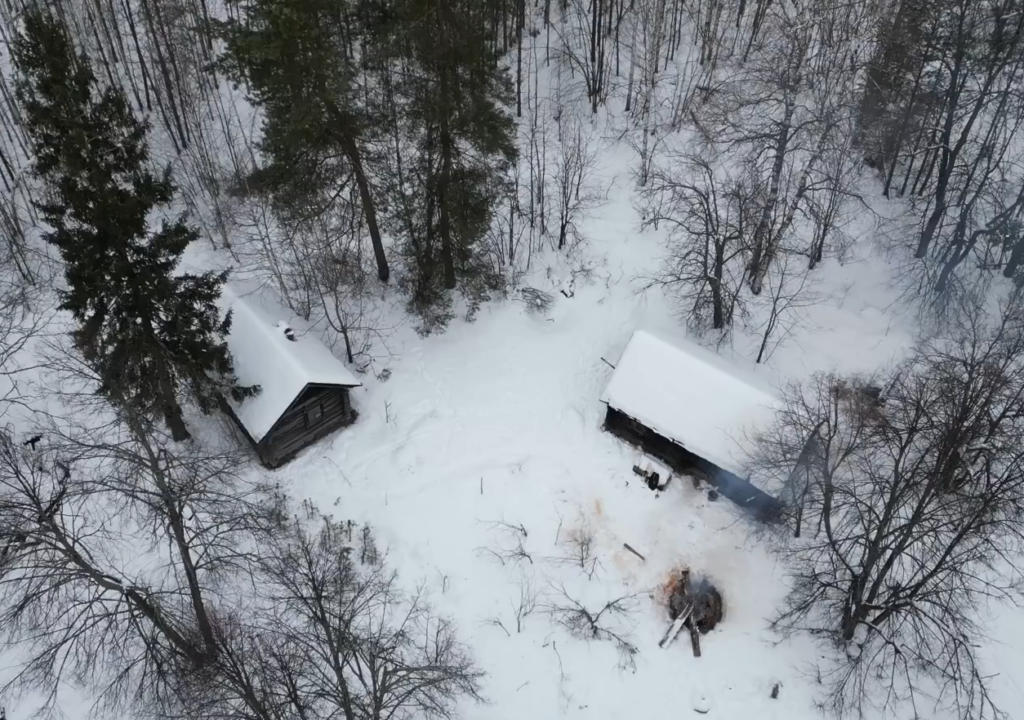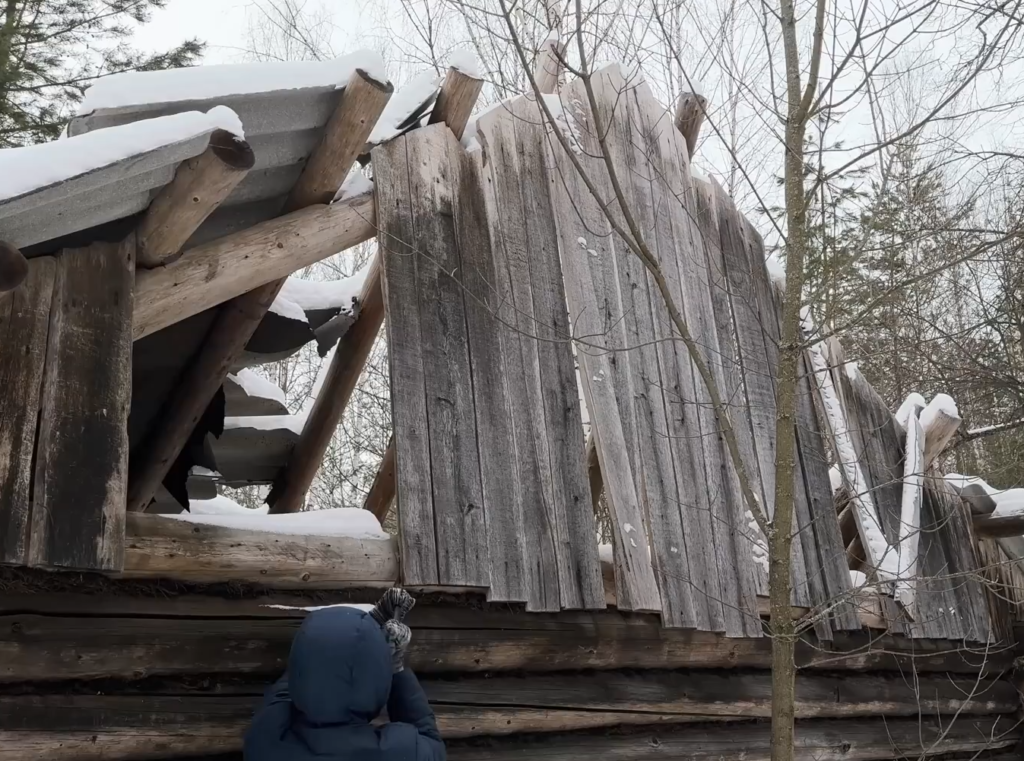Deep in the remote wilderness of the Taiga, an abandoned hut stands forgotten, its weathered logs and broken roof barely holding against the elements. With temperatures plunging to -20°C, restoring such a shelter is not just about reclaiming a piece of history—it’s a test of survival, craftsmanship, and resilience in one of the harshest environments on Earth.

The first challenge is assessing the hut’s condition. Snow-covered and weakened by time, its walls might still provide a base for restoration. Reinforcing the structure by replacing rotted wood, sealing gaps with moss or clay, and securing the roof with extra branches or tarps is essential to make it habitable.
Fire is the next priority. If the hut has an old stove, clearing out debris and getting it functional can turn the shelter into a warm refuge. Otherwise, constructing a safe indoor fire pit or an efficient fireplace using nearby stones and clay is necessary to combat the brutal cold. Gathering dry firewood, especially in sub-zero temperatures, requires skill and patience, but it’s the key to warmth and survival.

Once the shelter is secured, making it comfortable for an overnight stay is the final step. A raised bed of logs or pine boughs, combined with insulated blankets or a sleeping bag, helps retain body heat. Cooking a hot meal, whether simple broth or tea, not only provides warmth but also boosts morale in the isolation of the Taiga.
Restoring an abandoned hut in such extreme conditions is more than just a survival task—it’s an intimate dance with nature, reviving a lost refuge and forging a deep connection with the wild. In the heart of the frozen Taiga, the warmth of a restored shelter is a victory against the cold.


